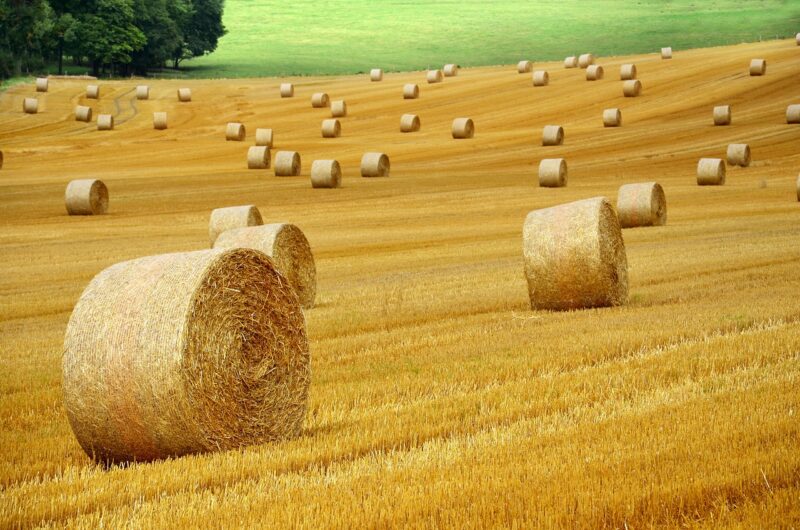How AI Is Helping to Solve World Hunger With Smarter Farming Technologies
November 16, 2024

World hunger is one of the most pressing challenges of our time. As the global population continues to grow, the demand for food increases dramatically, placing a strain on our current agricultural systems. Traditional farming practices often fall short due to inefficiencies, resource constraints, and environmental concerns. However, a revolutionary force is changing the landscape of agriculture—Artificial Intelligence (AI).
AI is transforming how we approach farming by enhancing productivity, optimizing resource use, and contributing to sustainable practices. In this article, we will explore the various ways AI is helping to solve world hunger through smarter farming technologies.
1. The Role of AI in Modern Agriculture
To understand how AI is aiding the fight against hunger, we must first dive into what AI technology entails. AI refers to the simulation of human intelligence in machines programmed to think and learn like humans. In agriculture, AI includes machine learning, computer vision, and data analytics, enabling farmers to make data-driven decisions.
Key AI Technologies Used in Agriculture:
- Machine Learning: Analyzing historical data to predict crop yields and optimize planting schedules based on weather patterns and soil conditions.
- <strong;Computer Vision: Utilizing drones and cameras to monitor crop health and detect pests or diseases at an early stage.
- <strong;Data Analytics: Processing large datasets to enhance decision-making regarding resource allocation and crop management.
These technologies empower farmers to achieve more with less, reducing waste and increasing food production efficiency.
2. Precision Agriculture: Enhancing Crop Yields
Precision agriculture uses AI to ensure that crops receive the right amount of water, nutrients, and care they need for optimal growth.
Through satellite imagery, soil sensors, and data analytics, farmers can gather detailed information about their fields. AI algorithms analyze this information to recommend tailored interventions, such as when to plant, irrigate, or fertilize.
Benefits of Precision Agriculture:
- <strong;Increased Efficiency: Fewer resources are wasted, leading to cost savings and increased sustainability.
- <strong;Higher Crop Yields: With precise inputs, farmers can maximize their outputs, contributing to greater food production.
- <strong;Environmental Sustainability: Reduced chemical runoff and lower water usage help minimize ecological impact.
Overall, precision agriculture driven by AI is a critical step in addressing the global food crisis.
3. Pest and Disease Management: Protecting Crops
Pests and diseases are major threats to food security, often leading to significant crop losses. AI-powered technologies are revolutionizing how farmers detect and combat these challenges.
Through the use of computer vision and drones, farmers can monitor fields in real-time, allowing them to identify emerging pest infestations and diseases before they spread. Machine learning algorithms can also analyze historical data on pest outbreaks to predict future threats, enabling farmers to take preventative measures.
Advantages of AI in Pest and Disease Management:
- <strong;Early Detection: Timely identification reduces crop losses and minimizes the need for chemical treatments.
- <strong;Targeted Interventions: Farmers can apply pesticides only where needed, reducing overall chemical usage and promoting environmental health.
- <strong;Cost Savings: Lower treatment costs enhance farm profitability while also improving sustainability.
By leveraging AI for pest and disease management, farmers can protect their crops more effectively and sustainably.
4. Resource Management: Water and Soil Optimization
Water scarcity and soil degradation are significant challenges in agriculture that need urgent attention. AI technologies are being used to optimize resource management effectively.
AI-powered irrigation systems can analyze weather forecasts, soil moisture levels, and plant requirements to determine optimal water usage. This precision helps conserve water while ensuring that crops receive the necessary hydration.
Likewise, AI can enhance soil management by analyzing soil health data and recommending crop rotation strategies, fertilizer applications, and soil amendments to improve fertility.
Benefits of AI in Resource Management:
- <strong;Water Conservation: Reduced water waste through smart irrigation practices contributes to drought resilience.
- <strong;Enhanced Soil Quality: Better soil management practices promote long-term agricultural productivity.
- <strong;Increased Food Security: Efficient resource management leads to higher yields, ensuring food availability.
AI’s role in resource management helps build resilience against environmental challenges, contributing to food security globally.
5. Supply Chain Optimization: Reducing Food Waste
The journey from farm to table involves a complex supply chain that often leads to significant food waste. AI can streamline this process, ensuring that food reaches consumers efficiently and effectively.
By utilizing predictive analytics, AI can forecast demand patterns, reducing overproduction and underproduction. Additionally, AI can help optimize logistics, selecting the best routes for transporting food while minimizing spoilage.
Advantages of AI in Supply Chain Management:
- <strong;Waste Reduction: By matching supply with demand, less food goes to waste before it reaches consumers.
- <strong;Improved Efficiency: Streamlined logistics lower transportation costs and enhance pricing for consumers.
- <strong;Greater Profitability: Reduction in waste translates to better margins for producers and retailers alike.
By improving supply chain efficiency using AI, the agricultural sector can contribute significantly to reducing world hunger.
Conclusion: AI as a Catalyst for Change
AI technology holds immense potential in the quest to solve world hunger by revolutionizing farming practices. Its ability to enhance productivity, optimize resource use, and reduce waste can significantly contribute to creating a more sustainable and food-secure future. As AI continues to evolve, it will undoubtedly play an increasingly critical role in addressing global hunger challenges.
Investing in AI technologies and promoting their adoption in agriculture will not only increase food production but also create resilient farming systems capable of withstanding the pressures of climate change and population growth. The future of smarter farming offers hope for a world where everyone has access to nutritious food.
Final Thoughts:
The collaboration of technology and agriculture is essential in securing an adequate food supply for future generations. By harnessing the power of AI, we can pave the way for innovative solutions to combat hunger and improve the quality of life for millions around the globe.








